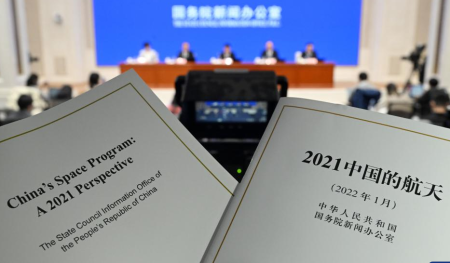Pieces of old Long March 3B rocket fall in India
It appears that pieces of an old Long March 3B rocket, launched on February 4, 2021, have fallen in India earlier this month.
On April 2, locals of Sindewahi tehsil were shocked to see six metallic spheres, metal balls and a metallic ring falling from the sky. Similar objects fell from the sky simultaneously in parts of Maharashtra, Madhya Pradesh and Gujarat.
This is not an example of China dumping the expendable first stage of a rocket on the ground during launch. These pieces came from the rocket’s upper stage, which reached orbit in ’21 and only now fell to Earth when its orbit decayed. Usually, most of the upper stage of a rocket burns up upon re-entry. However, certain pieces, such as the inner helium tanks that keep the larger fuel and oxidizer tanks pressurized, are sometimes strong enough to survive re-entry. It is likely that these tanks are the metallic spheres.
To avoid this, the rocket’s upper stage engine needs to be fired one last time to aim the re-entry over the ocean. SpaceX does this routinely. It appears at least in this one case China did not.
It appears that pieces of an old Long March 3B rocket, launched on February 4, 2021, have fallen in India earlier this month.
On April 2, locals of Sindewahi tehsil were shocked to see six metallic spheres, metal balls and a metallic ring falling from the sky. Similar objects fell from the sky simultaneously in parts of Maharashtra, Madhya Pradesh and Gujarat.
This is not an example of China dumping the expendable first stage of a rocket on the ground during launch. These pieces came from the rocket’s upper stage, which reached orbit in ’21 and only now fell to Earth when its orbit decayed. Usually, most of the upper stage of a rocket burns up upon re-entry. However, certain pieces, such as the inner helium tanks that keep the larger fuel and oxidizer tanks pressurized, are sometimes strong enough to survive re-entry. It is likely that these tanks are the metallic spheres.
To avoid this, the rocket’s upper stage engine needs to be fired one last time to aim the re-entry over the ocean. SpaceX does this routinely. It appears at least in this one case China did not.



